Umbrella plants may be low-maintenance, but when it comes to keeping them in their best condition, pruning is the way to go.
Regardless of your skill level, this article will give you the best tips on where to snip and how to clip foliage.
From gathering the necessary tools to identifying which parts of the plant need pruning, this article will guide you through the entire process step-by-step.
4 Easy Steps For Pruning Your Umbrella Plant
1. Gather the Tools You Need
Before pruning an umbrella plant, it is important to gather the necessary tools. Having the right tools on hand will make the process easier, quicker, and safer.
Pruning Shears
These specialized scissors are designed to make clean, precise cuts on plants. When pruning an umbrella plant, it is important to use sharp pruning shears to avoid damaging the plant.

There are two main types of pruning shears: bypass and anvil.
Bypass shears have two curved blades that pass by each other when cutting, while anvil shears have one straight blade that cuts against a flat surface.
Pro tip: Bypass shears are generally preferred for pruning plants because they make cleaner cuts.
See these bypass shears on Amazon.
Gloves
Gloves are another essential tool when pruning an umbrella plant.
They protect your hands from thorns, sharp leaves, and other potential hazards.
When choosing gloves, look for a pair that fits snugly but not too tightly. This will give you the dexterity you need to make precise cuts while still protecting your hands.
It is also important to choose gloves made from a durable material, such as leather or synthetic leather. These materials offer better protection than cloth or cotton gloves.
2. Identify Where to Cut
Umbrella plants are beautiful and vibrant, but they require regular pruning to keep them healthy and looking their best.
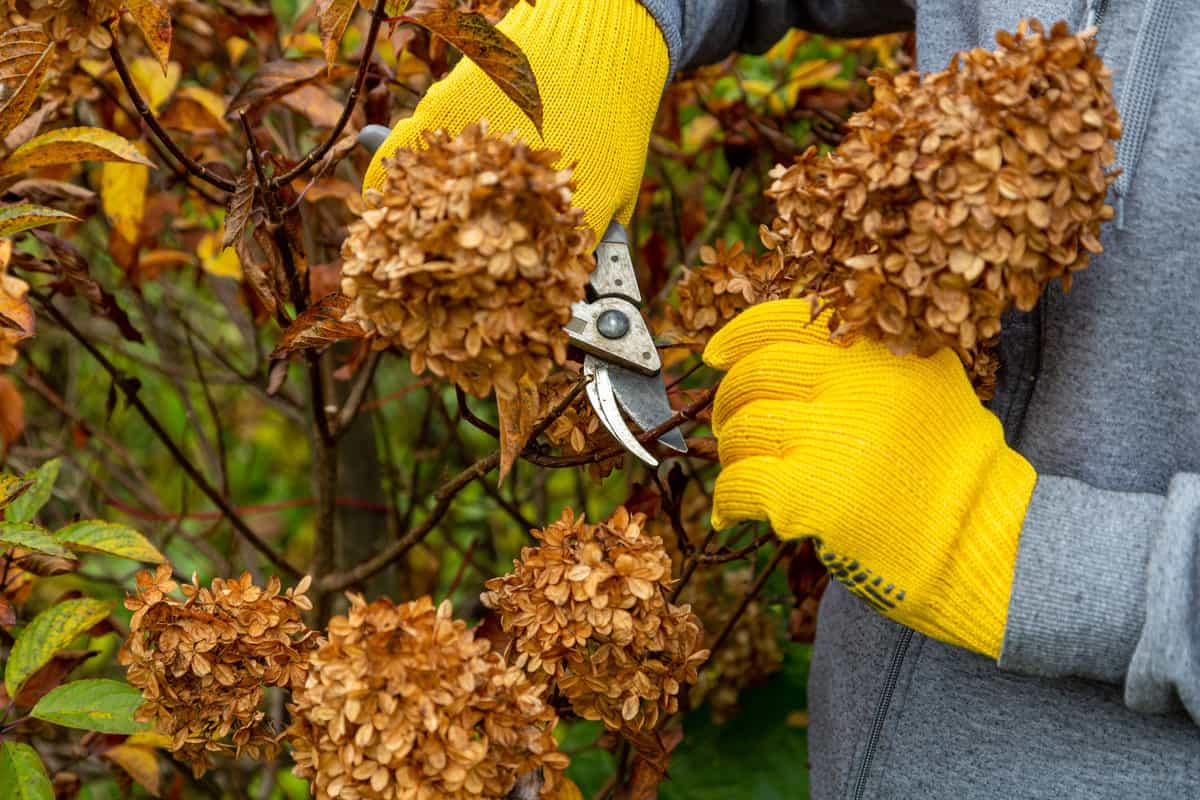
Knowing where to cut is essential to ensure that your plant thrives.
Focus on two key areas of your pruning efforts: dead or diseased stems and overgrown areas.
Dead or Diseased Stems
Dead or diseased stems are brown, wilted, and may even have spots or discoloration.
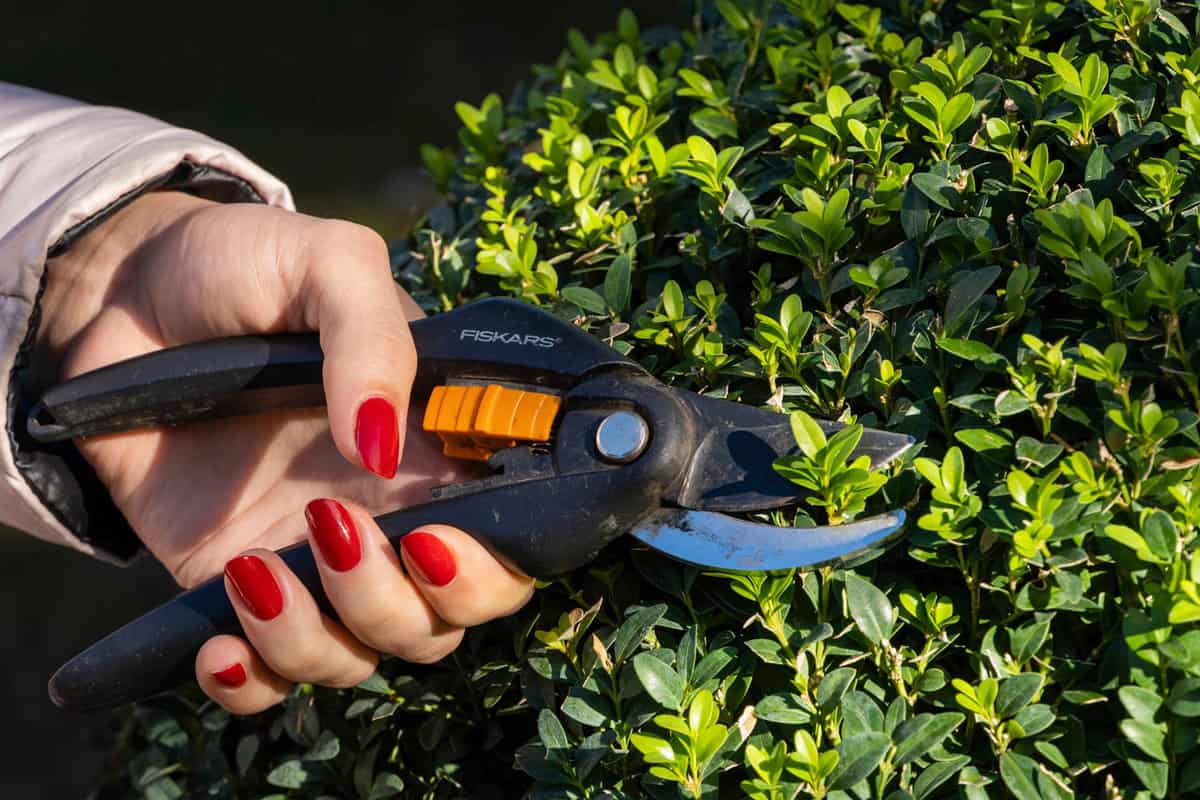
These stems should be removed immediately to prevent the spread of disease to other parts of the plant.
Use sharp scissors or pruners to cut the stem as close to the base as possible. Be sure to sterilize your tools between cuts to prevent the spread of disease.
Overgrown Areas
Overgrown areas are places where the plant has become too dense or has grown too tall.
These can prevent sunlight and air from reaching the plant, which can lead to a host of issues, including disease and insect infestations.
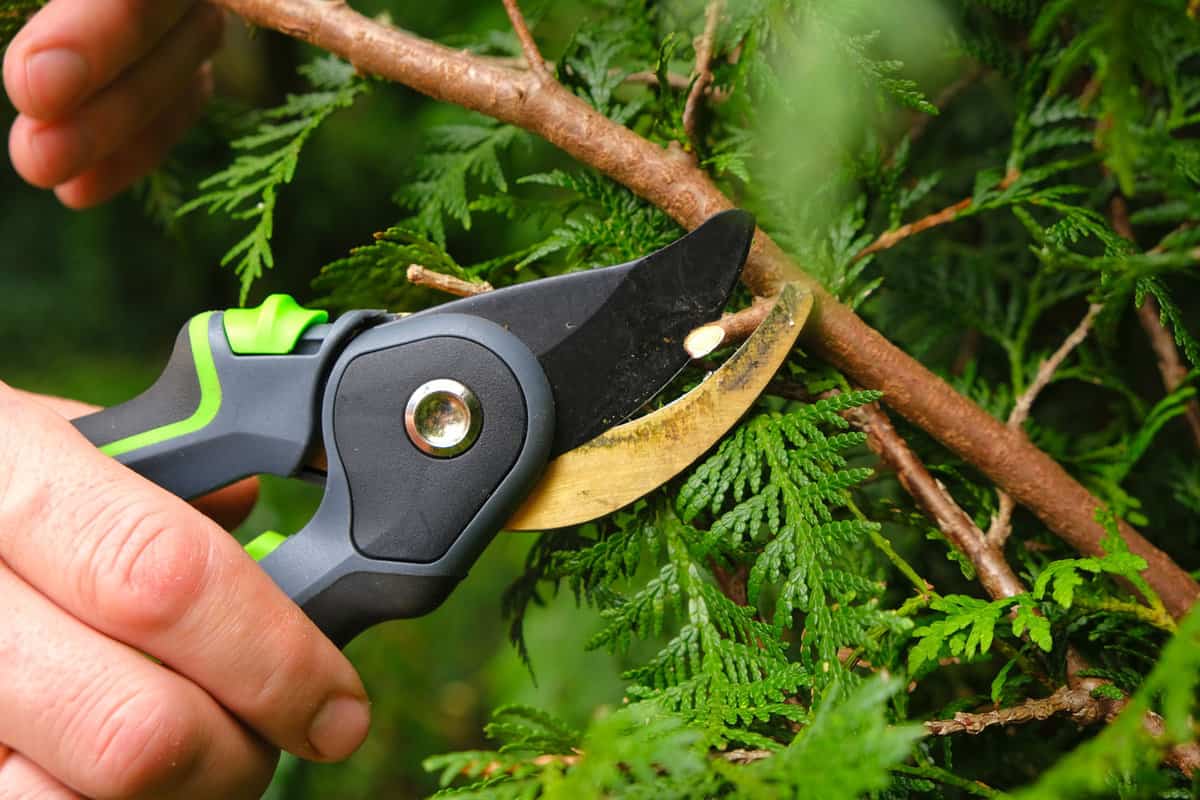
To identify overgrown areas, look for stems that are crossing over each other or blocking the light.
These areas should be pruned back to the main stem or to a lateral branch. This will help to open up the plant and allow for better airflow and light penetration.
Also read: Where Do You Cut When Pruning A Plant? [And At What Angle?]
3. Make the Cut
When done properly, pruning can help shape the plant, encourage new growth, and keep it healthy.

The two most important factors in making a successful cut are the angle of the cut and making clean cuts.
Angle of Cut
The angle of the cut will determine how the plant heals and how it grows in the future.
For smaller branches, make the cut at a 45-degree angle.

This will help the plant heal faster and prevent water from pooling on the cut surface.
For larger branches, make a cut at a 90-degree angle. This will help the plant heal more slowly and prevent the branch from breaking off.
Clean Cuts
Clean cuts will help the plant heal faster and prevent disease from entering the cut.
Before making a cut, sterilize your shears with rubbing alcohol to prevent the spread of disease.
To make a clean cut, use sharp, clean pruning shears. Dull or dirty shears can crush the stem, making it harder for the plant to heal.
When making a cut, position the shears just above a leaf node. This will encourage new growth and prevent the plant from becoming too sparse.
Avoid cutting too close to the node, as this can damage the plant. Once you've made the cut, remove any dead or diseased leaves from the plant to prevent the spread of disease.
4. Don't Skip the Aftercare
Now that you've successfully pruned your umbrella plant, it's time to give it the care it needs to thrive.
Proper aftercare will ensure that your plant remains healthy and beautiful for years to come.
Watering
Umbrella plants prefer moist soil but can quickly become waterlogged if their soil is routinely oversaturated.
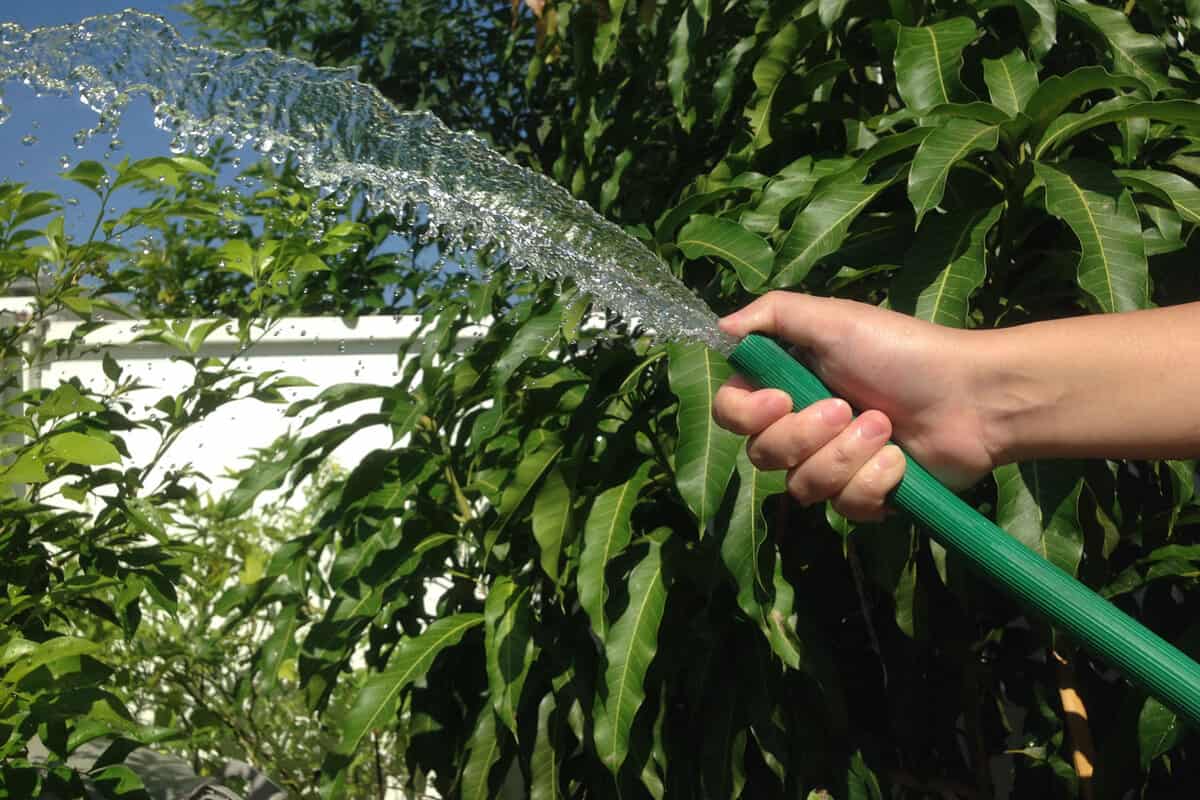
Water your plant only when the top inch of soil is dry to the touch.
Be sure to water it thoroughly and allow any excess water to drain away. Overwatering can lead to root rot, which can be fatal to your plant.
Fertilizing
To keep your umbrella plant healthy and promote new growth, fertilize it every two weeks during the growing season (spring and summer).
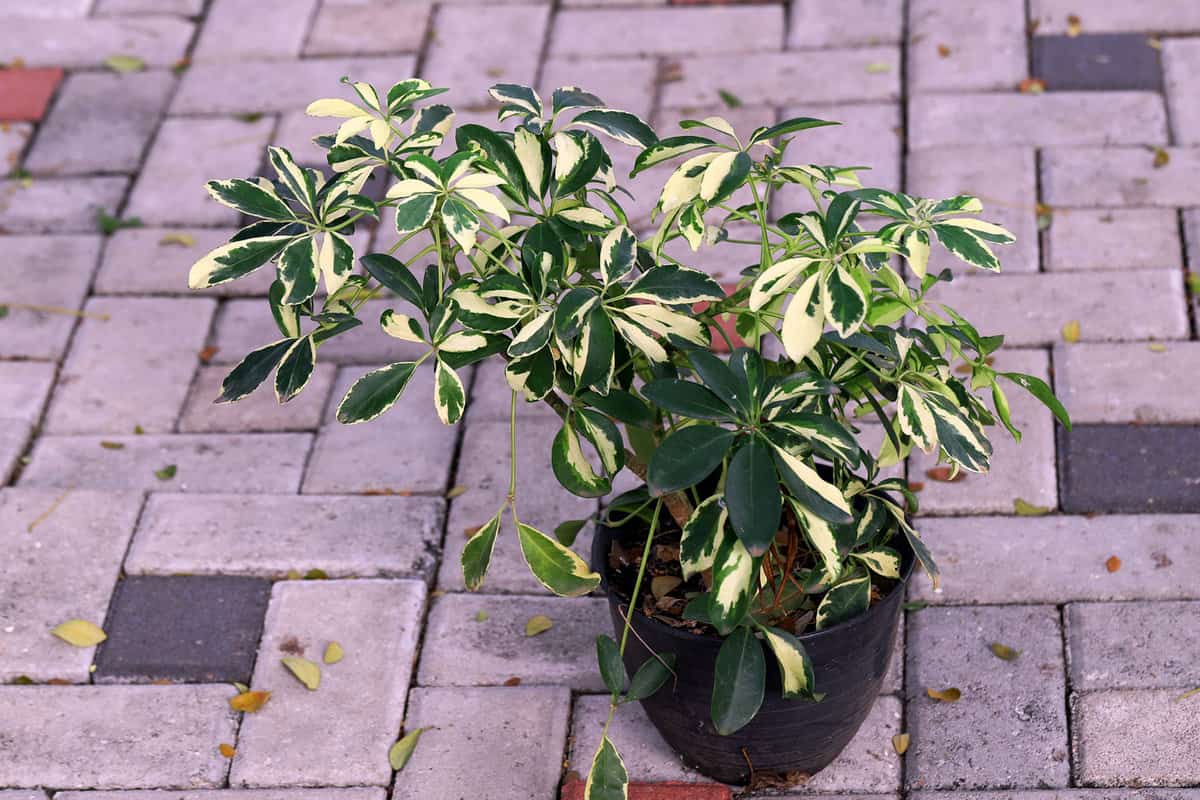
Use a balanced liquid fertilizer diluted to half strength.
During the dormant season (fall and winter), reduce fertilization to once a month.
Location and Light
Umbrella plants thrive in bright, indirect light.
Place your plant near a north or east-facing window where it can receive bright, filtered light.
Avoid placing it in direct sunlight, as this can scorch the leaves.
If your umbrella plant is not getting enough light, the leaves may start to yellow and drop. If this happens, move your plant to a brighter location.
On the other hand, if your plant is getting too much light, the leaves may turn brown and crispy. If this happens, move your plant to a shadier spot.
Bonus Tips on Pruning Your Umbrella Plant
Curious about the perfect timing to trim your umbrella plant? Understanding when to prune is key to its well-being and aesthetic appeal.

Here are the best times based on the seasons and its growth stage:
Understand Seasonal Timing
The best time to prune your umbrella plant is during the spring or summer months when it is actively growing.
During this time, the plant is better able to heal itself and will recover more quickly from the pruning process.
Pruning during the fall or winter months when the plant is dormant can be more stressful, and it may take longer for the plant to recover.
Check the Growth Stage
If your plant is young and still developing, you may want to wait until it has reached a certain size before pruning.
This will allow the plant to establish a strong root system and develop a healthy structure before you start cutting away branches.
On the other hand, if your plant is mature and has become too large for its current space, you may need to prune it more frequently.
This will help to keep the plant in check and prevent it from becoming too unwieldy.
Why is Pruning Essential?
For umbrella plants, pruning is particularly important for maintaining their shape and size.
These plants can grow quite tall and bushy, which can make them look unkempt and unsightly if not pruned regularly.
Pruning can also help prevent the plant from becoming too top-heavy and tipping over.
How do you propagate an umbrella plant?
To propagate an umbrella plant, take a cutting that is approximately 6 inches long and has several leaves.
Remove the lower leaves and place the cutting in a pot filled with moist soil. Keep the soil moist and in a warm, bright location until roots have formed and new growth appears.
Can you prune and propagate an umbrella tree at the same time?
Yes, you can prune and propagate an umbrella tree at the same time.
Simply take cuttings from the pruned branches and follow the propagation process outlined above.
This will allow you to create new plants while also maintaining the health and shape of your existing plant.
There you have it! By following the steps outlined in this post, you'll have a successful pruning session.
Excited to learn more about umbrella plants and pruning? Also read:
Can Umbrella Plants Go Outside?
The Ultimate Guide To Knockout Roses: Planting, Pruning, And Fertilizing Tips


